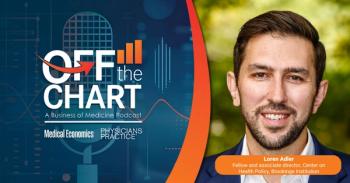
MedPAC recommends tying Medicare physician reimbursement to Medicare Economic Index
Key Takeaways
- MedPAC suggests a 2026 payment update based on MEI minus one percentage point, with safety-net add-ons for low-income care.
- Proposed changes could cost $2 billion to $5 billion initially, reaching $25 billion over five years, ensuring care access.
Choice is up to Congress, but plan presents a raise for 2026, with additional money for primary care.
Primary care physicians could get a financial boost if Congress were to base Medicare reimbursement on the Medicare Economic Index and add payments to doctors treating low-income beneficiaries.
The Medicare Payment Advisory Commission (MedPAC) voted Jan. 16 to recommend Congress alter the way physicians are compensated through the program for seniors aged 65 years and older.
MedPAC recommended:
- For calendar year 2026, replace the current law payment rate with a single update equal to the projected increase in the MEI minus one percentage point.
- Enact MedPAC’s March 2023 recommendation to establish safety-net add-on payments for services delivered to low-income Medicare beneficiaries. That plan recommended an additional 15% for primary care physicians and other clinicians, and 5% more for other specialists.
Those changes are estimated to cost billions – $2 billion to $5 billion in the first year, up to $25 billion over five years. They also would bring at least two benefits. Beneficiaries will continue having access to care and clinicians will provide it, especially for the low-income patients, according to MedPAC.
By the numbers
MedPAC members considered data presented by staff principal policy analysts Rachel Burton, MPP; Geoff Gerhardt, MPP; Brian O’Donnell, MPP; and Ledia Tabor, MPH. There was a two-part recommendation.
- In 2026, the MEI is projected to increase by 2.3%. Subtracting a percentage point would yield a 1.3% increase for the year.
- With MedPAC’s safety net recommendation from March 2023, the average clinician’s fee schedule payment would go up by 1.7%. Together, the average fee-for-service (FFS) physician fee schedule would increase 35.
- Primary care clinicians would benefit from a projected increase of 5.7% more from reimbursement. All other clinicians would get an estimated 2.5% raise.
The MEI peaked in 2022 at 4.4%; a year later, spending per Medicare FFS beneficiary rose by 4.2%, and also in 2023 median compensation grew 3% for physicians and 6% for advanced practice providers, the report said.
Limiting access
Physicians, including Scott, and their advocacy groups repeatedly have asserted continual cuts to Medicare reimbursement would lead to more doctors declining to treat Medicare beneficiaries. Apparently beneficiaries are not seeing effects at their physicians’ offices, according to the MedPAC analysis.
“Our 2024 survey found that Medicare beneficiaries ages 65+ reported access to care that was comparable with or, in most cases, better than that of privately insured people ages 50-64,” the analysts wrote. “Comparable shares of clinicians accept patients with Medicare and private insurance.”
For traditional Medicare beneficiaries, encounters per clinician rose by 4.3% in 2023.
“The total number of clinicians is increasing, although the mix of clinicians is changing,” the report said, although quality of care remains difficult to measure.
Newsletter
Stay informed and empowered with Medical Economics enewsletter, delivering expert insights, financial strategies, practice management tips and technology trends — tailored for today’s physicians.

















